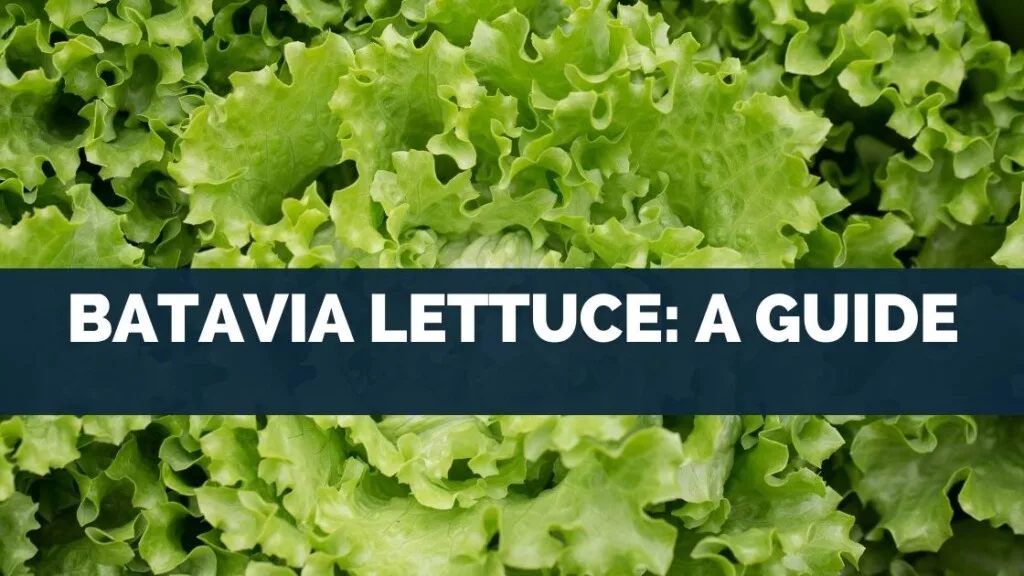
There are so many types of lettuce, and each has its unique flavor and texture. One of my favorites is Batavia lettuce.
In this post, I’ll provide you with all the information you need to know about it, including its nutritional value and how to use it in recipes.
So whether you’re a farmer or a health-conscious consumer, read on for everything you need to know about Batavia lettuce!
Table of Contents
Origins of Batavia Lettuce
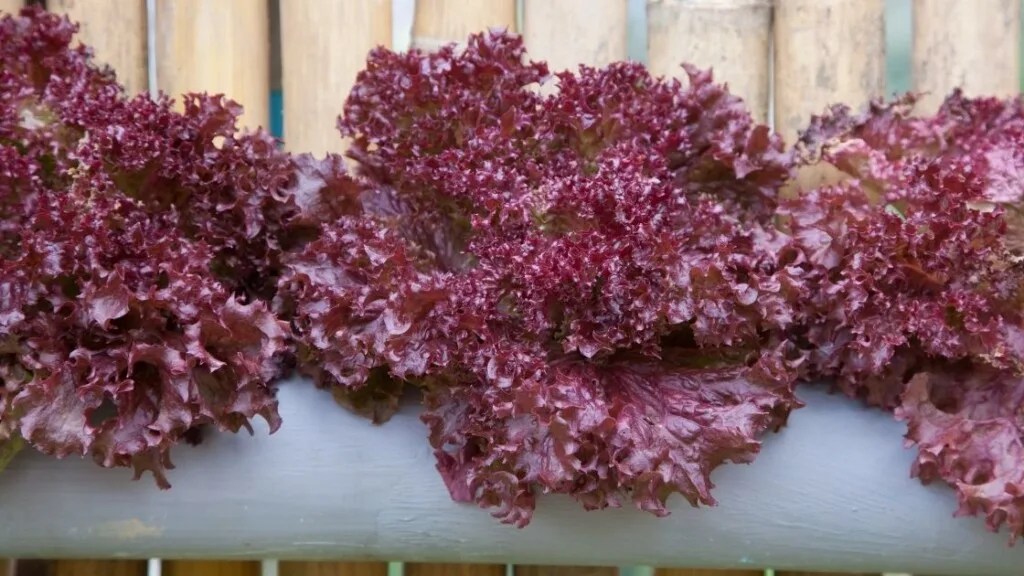
The Batavia lettuce was first introduced in the United States in 1885. It is a crisp, dark green leaf lettuce with a buttery texture and a slightly sweet flavor. The Batavia lettuce is a hybrid of two other lettuces, the Forellenschluss (red romaine) and the Butterhead (a soft head).
The Batavia lettuce is named for Batavia, New York, first grown.
Varieties of Batavia

There are two primary varieties of Batavia lettuce: Green Bibb and Red Treviso. Although both types have a pale green color, they are visually distinct.
The leaves of Green Bibb lettuce form a loosehead, whereas those of Red Treviso grow in a rosette pattern similar to those of radicchio. Both types tend to be slightly bitter and peppery in flavor, which works well with a sweet dressing.
Batavia lettuce is commonly used as an accent ingredient for entrées or side salads. It can also be included in sandwiches and wraps.
The plant is relatively easy to grow and does not take up much space, making it suitable for organic gardening due to its low environmental impact.
Green Bibb Lettuce: In North America, the most common type is Green Bibb, which has a loose-leaf head similar to the iceberg variety.
It forms a pale green dome. Green Bibb lettuce may be used as a substitute for icebergs in recipes.
The leaves of Green Bibb lettuce are slightly curly and oblong, with wide spaces between the stems.
Red Treviso Lettuce: The other variety of Batavia lettuce is Red Treviso, which has a rosette pattern and a more bitter taste than Green Bibb. It closely resembles radicchio in both appearance and texture.
There are several types of Red Treviso, such as Castelfranco and Rossa de Trento.
The leaves of Red Treviso grow in a rosette pattern. They are dark green with red veins and turn bright burgundy after frost.
How to grow Batavia Lettuce?
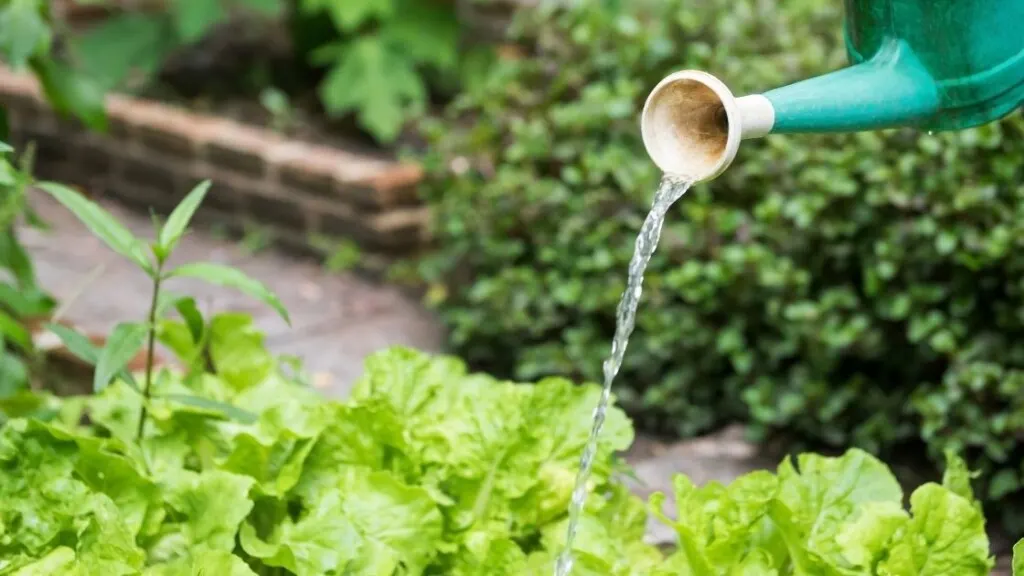
Batavia Lettuce is a type of open-pollinated head lettuce, which means that it has small yellow flowers and produces lots of seeds.
Batavia lettuce is grown from seedlings from mother plants in the greenhouse before being transplanted into fields or raised in commercial production.
It is a versatile and tasty leafy green that can be used in salads, sandwiches, and wraps. It is a cool-season crop that can be grown in most climates. Here are some tips on how to grow Batavia lettuce:
- Choose a sunny location with well-drained soil.
- Plant seeds directly in the garden after the last frost date or start them indoors 4-6 weeks before the later frost date.
- Sow seeds in rows, spacing them about 1 inch apart.
- Cover seeds with soil and tamp down.
- Water the seeds lightly after sowing and cover with a protective layer of straw or leaves to retain soil moisture as sprouts emerge from the ground.
- Remove the covering as soon as you see green growth, which usually occurs within a week of sowing.
- Keep plants well-watered during the growing season.
- Batavia lettuce is very cold hardy and can be harvested well into the fall months.
The Good Place to Grow Batavia lettuce
Like other lettuce varieties, Batavia lettuce prefers bright to partially shaded conditions. Its growth is not possible in an entirely shady environment.
The curly lettuce should have moist soil, yet not soggy. Waterlogging is not appropriate for the Batavia salad. He also likes well-drained loose soils with high humus and nutrients.
Recipes for Batavia lettuce
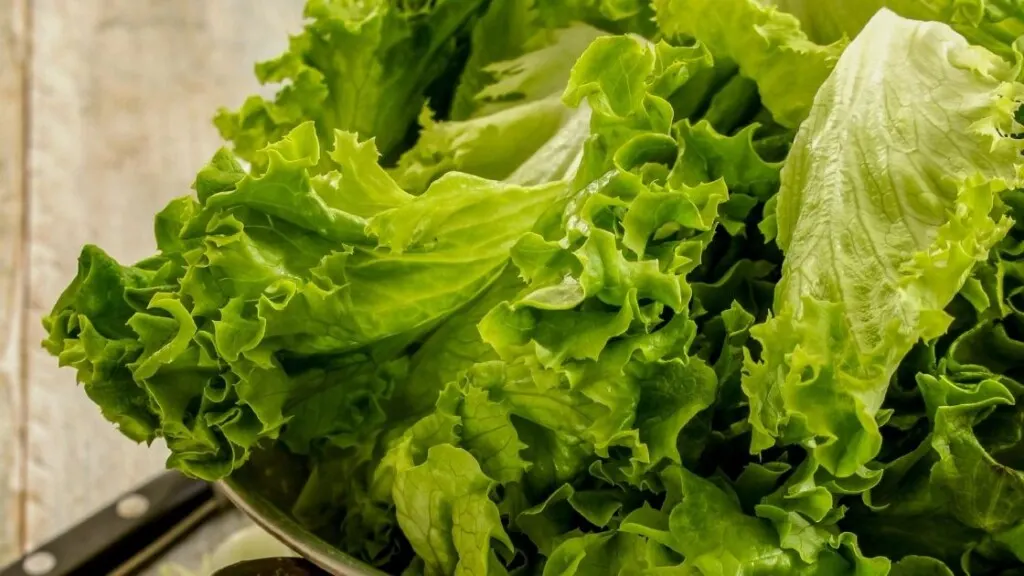
Many delicious recipes can be made with Batavia lettuce. Here are a few of my favorites:
Salad with Batavia Lettuce, Tomatoes, and Feta Cheese
Ingredients:
- 1/4 cup olive oil
- 1/4 cup red wine vinegar
- One teaspoon Dijon mustard
- 1/2 teaspoon kosher salt
- 1/4 teaspoon freshly ground black pepper
- One head Batavia lettuce, cored and chopped
- 1-pint cherry tomatoes—grease one halved
- 1/2 cup crumbled feta cheese
Instructions:
Combine oil, vinegar, mustard, salt, and pepper in a jar; cover and shake until well blended. Place lettuce and tomatoes in a large bowl; add dressing and toss to coat. Sprinkle it with cheese just before serving, making six servings (serving size: about 2 cups).
Chicken Salad with Batavia Lettuce
Ingredients:
- -1 cup diced cooked chicken
- -1/2 cup diced celery
- -1/4 cup diced red onion
- -1/4 cup diced green bell pepper
- -1/4 cup diced yellow bell pepper
- -1/2 cup mayonnaise
- -1 tablespoon white wine vinegar
- -1 tablespoon Dijon mustard
- -1 teaspoon granulated sugar
- -1/2 teaspoon salt
- -1/4 teaspoon black pepper
- -2 cups shredded Batavia lettuce
Instructions:
- Combine the chicken, celery, red onion, green bell pepper, yellow bell pepper, mayonnaise, white wine vinegar, Dijon mustard, sugar, salt, and black pepper in a large bowl. Mix well to combine.
- Add the lettuce and toss to combine. Serve immediately.
Grilled Cheese Sandwich with Batavia Lettuce
Ingredients:
- -1 Batavia lettuce leaf
- -1 slice of cheese
- -1 tablespoon of butter
- -1/2 teaspoon of salt
- -1/4 teaspoon of black pepper
- -1/4 cup of breadcrumbs
- -1/4 cup of grated Parmesan cheese
- -1 garlic clove, minced
- -2 tablespoons of extra-virgin olive oil
Instructions:
- Preheat the oven to 400 degrees F (200 degrees C). Grease a baking sheet with one tablespoon of butter.
- Remove the stem from the lettuce leaf and discard it. Cut the cheese into thin slices and place them on the lettuce leaf. Melt the remaining butter in a small saucepan over low heat. Stir in the salt, pepper, bread crumbs, Parmesan cheese, and garlic and mix well.
- Spoon a teaspoon of the buttered breadcrumbs onto each piece of cheese and place them on the prepared baking sheet. Drizzle with olive oil and bake for 10 minutes or crisp and golden brown.
- Serve hot with Grilled Tomato Dijon Sauce.
Wrapping it Up – Batavia lettuce:
Batavia lettuce is a versatile, delicious leafy greens that can be grown differently. You need to know what you’re looking for and how to grow it!
We hope this article has helped you learn about the history of Batavia lettuce, its types, and some recipes where it’s used.
Finding ways to prepare this versatile veggie might be tricky, but don’t worry; our recipes section will help you get your new favorites. Find out how to grow healthy and fresh Batavia lettuce, and grow your vegetables quickly (and cheaply!).

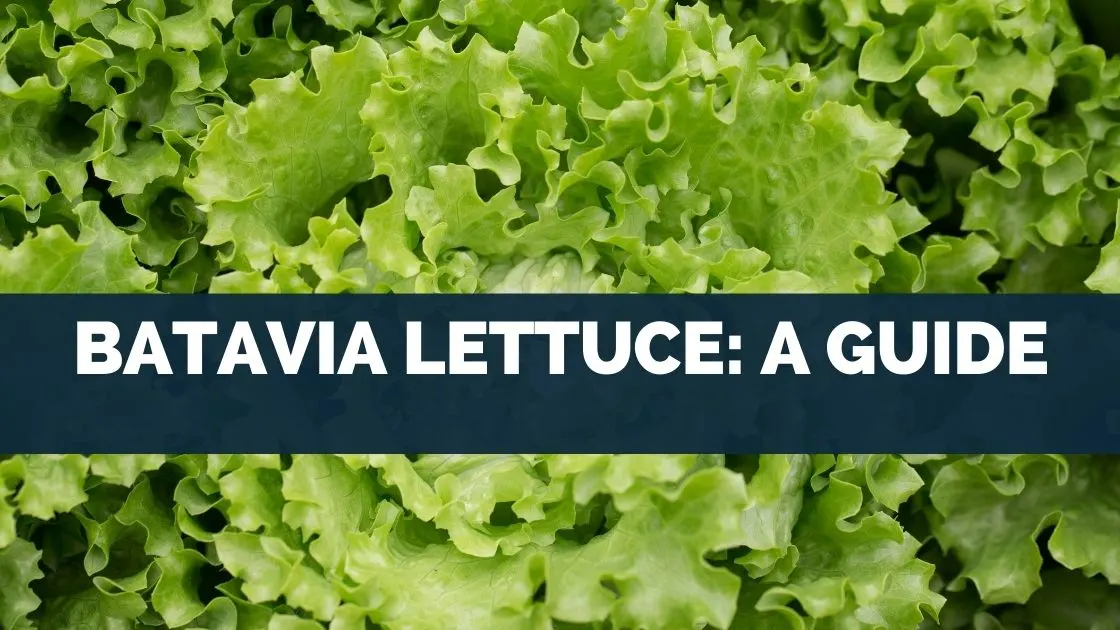
Leave a comment